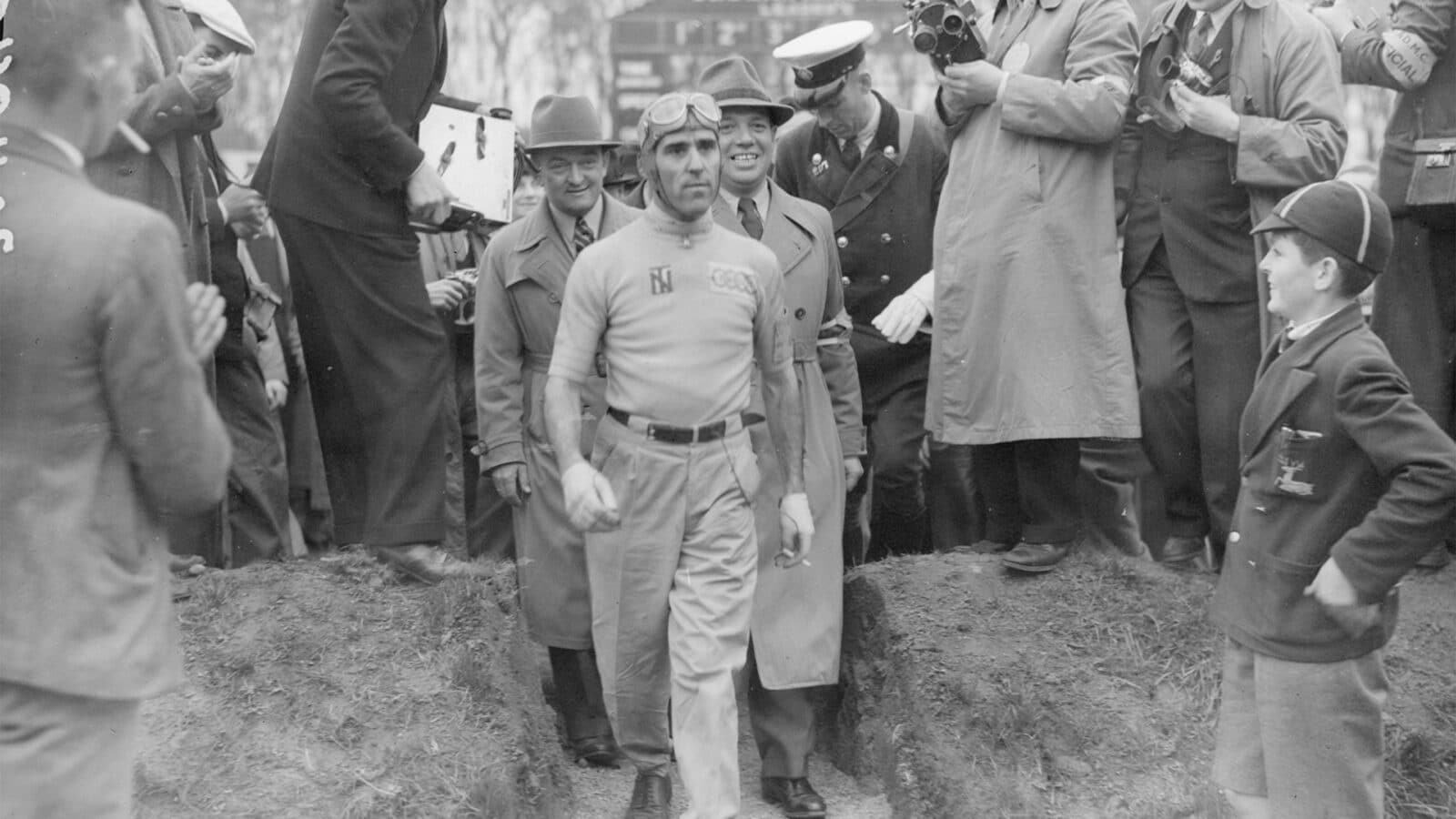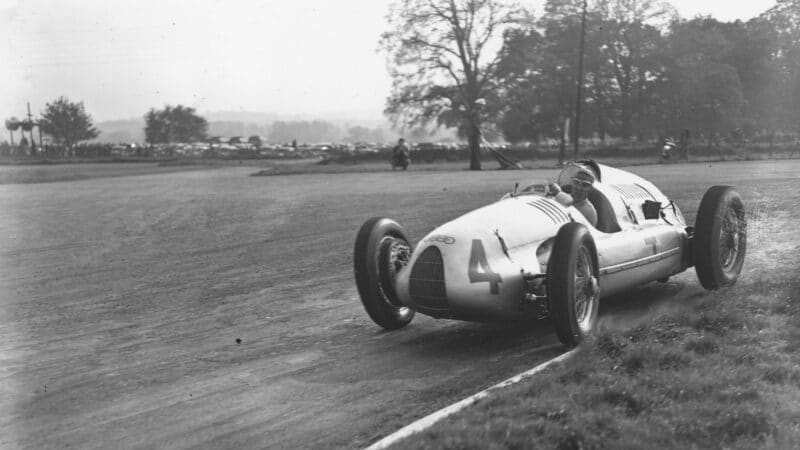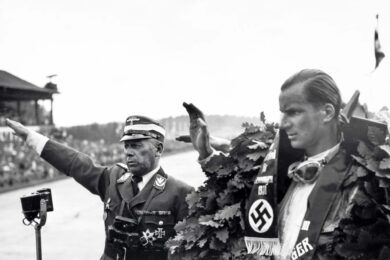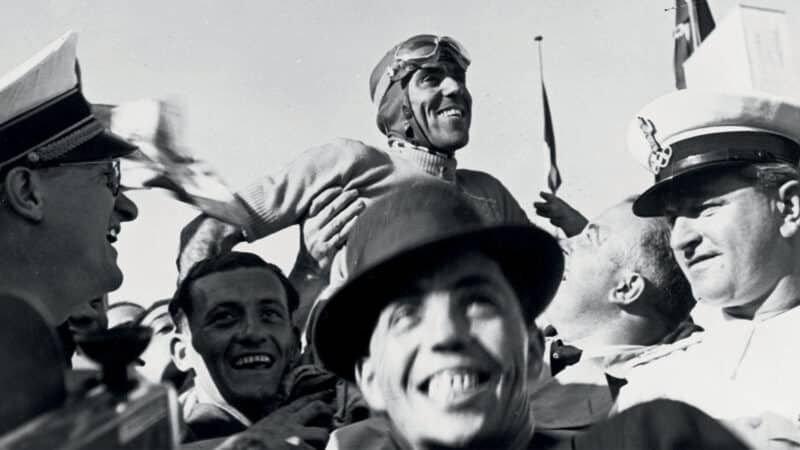Due to the continuing international uncertainty the Germans did not wish to run the risk of being isolated in the UK, which would become enemy territory should war break out. Four days before the scheduled race date Fred Craner, who lived in the Coppice Farmhouse across the track from the barns where the German teams were based, was awoken by the sound of the Mercedes-Benz team’s 27 men, five racing cars and 10 trucks being prepared to depart. With their usual efficiency they were ready to return to their home country by 7.30am and set off in convoy by road to Harwich in order to catch the ferry to Hook of Holland.
The Auto Union team also departed on the short trip to Castle Donington railway station, where the cars were loaded onto wagons. The teams then kept in touch with their respective headquarters and with Adolf Hühnlein, the head of German motor sport. As international tensions were easing once more, Hühnlein instructed the teams to return. They were back at Donington about 12 hours after they had left. Unfortunately – and slightly comedically for the teams – the situation then worsened once again and the charade continued. The teams again made the decision to leave.
Some Auto Union personnel managed to catch the 5am boat from Harwich and at 12.30pm the rail wagons containing their cars edged out of Castle Donington station en route for the port, the Mercedes-Benz team departing by road at about the same time.
But Craner was a man of cast-iron will and stubborn determination and was not of a mind to let such a difficulty as a possible war breaking out hinder his efforts to run a Grand Prix. He continued in his desperate efforts to run the race, in spite of the absence of the prime participants. Eventually it was decided to postpone the race by three weeks. The German teams agreed to return to Donington yet again, in time for the new date of Saturday, October 22.

Richard Seaman prepares his Mercedes for Donington drama
Getty Images
Bill Boddy, Motor Sport magazine’s founding editor, was on the spot as the Germans arrived at Donington for the third time and the Grand Prix got underway:
“Through the wood beyond Red Gate the cars sound terrific, and their speed down to the hairpin is prodigious, but perhaps the most spectacular point is from McLean’s Corner, along the straight to Coppice Corner. Frequently the cars visit the grass verge at Melbourne and they come out of the woods like bombs, sliding sideways.
“The little Union Jack fell and already Nuvolari had a nice lead. The little Italian was astounding, arms flashing like pistons”
“During the afternoon a deer again strayed onto the course, but this one escaped alive and [Manfred von] Brauchitsch merely waved to it. (Nuvolari’s Auto Union had earlier collided with a stray, killing it instantly). Donington is a truly great spot at which to stage a great motor race. Wandering over the wide expanse of grass-grown paddock, studded with gnarled trees, the Hall forming an imposing background, it is difficult to believe that we had just seen Nuvolari screaming towards us at 160mph, tail sliding out so that the Auto Union’s nose pointed directly at us, front wheels flapping wildly to retain control.
“October 22 dawned misty and remained warm and gloriously sunny. HRH the Duke of Kent flew up from London and was driven to the course in a V12 Lagonda saloon, in which Richard Seaman, mackintosh over his overalls, drove him for two laps of the course. They say the second lap was quite rapid.
“The little Union Jack fell and in a crash of sound they were off around Red Gate. Already Nuvolari had a nice lead from Brauchitsch, Seaman and Hermann Lang. Another lap, and the Germans were up to 170 or so along the straight, the whole circuit sang to the sound and the almondy boot-polish fumes became quite pungent. Came drama! Robin Hanson’s Alta broke its engine and dropped much oil by the approach to the hairpin. Rudolf Hasse skidded to the right, shot across the road, hit some fencing on the outside of the course, which uprooted as if struck by a bomb, missed a hut in which sat Mrs Craner, and smote the safety bank. Seaman left the course on the inside, came back across the road and ended up beyond the wrecked Auto Union.

Auto Union sits wrecked. Seaman followed soon after
Getty Images
“Nuvolari had passed Hermann Müller; the little Italian was astounding. He went out of the wood and down to the hairpin in his inimitable style, arms bowed out and flashing like pistons to head level, the car in full control, yet never straight for a moment. The greatest race we have ever had… Nuvolari crossed the line, the winner. He stopped, received a wreath of honour and drove another lap. Lang finished second, Seaman came in third. Our biggest motor racing crowd, now rapidly invading the course, stood most impressively to attention, in honour of the greatest driver of all time, Tazio Nuvolari.”






